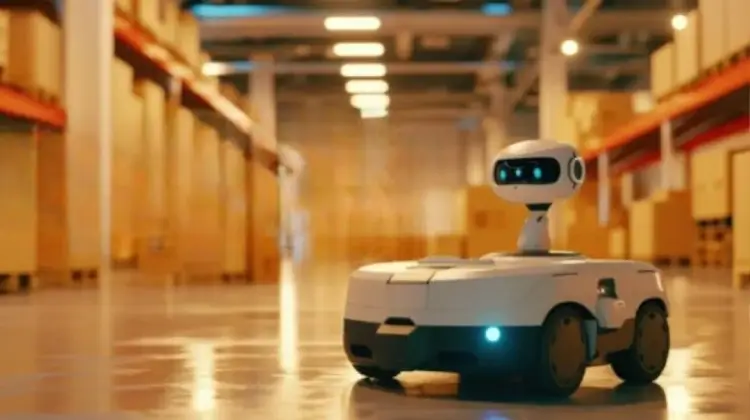AMRs Driving Innovation in Warehouse Operations
In the constantly evolving realm of distribution and warehousing, a new workforce is emerging. The advent of autonomous mobile robots (AMRs) has revolutionized the field of material handling by combining innovation and efficiency. Selecting the appropriate AMR is essential for enhancing operational flexibility and efficiency. AMRs provide a logical, adaptable, and efficient solution to industrial demands globally in the supply chain domain. This article explores the rapid growth of AMRs and how they are changing modern warehouses.
Current Challenges in Warehouse Operations
Hiring and Retention: Competent worker recruitment, training, and retention are challenging, exacerbated by fluctuating demands and high turnover, leading to delays, errors, and operational difficulties.
Variable Demand: Cyclical, erratic, or variable demands must be accommodated by operations.
Technological Innovations: Embracing to new developments in technology and logistics is a never-ending challenge.
Costly Automation: Conventional automation solutions are costly, rigid, and challenging to scale up.
Data Integration: Efficiency hinges on how well supply chain data and insights are integrated.
Inefficient Scheduling: Missed shipments, outages, dissatisfied clients, and a tarnished reputation are all consequences of insufficient scheduling.
Workforce Turnover: High turnover rates result in mistakes and delays since prospective workers must be trained.
Risks to Safety: The operational continuity and well-being of workers can be significantly impacted by the high risk of accidents and injuries.
Ineffective Communication: Inadequate communication can complicate logistics management by leading to operational failures, which comprise mishaps and schedule concerns.
AMRs provide an adaptive solution to these challenges. AMRs can increase warehouse capabilities and gross margins by improving operational efficiency, safety, and adaptability. They will become a vital component of supply chains of the present and the future.
The Operational Impact of AMRs
Automation: AMRs improve productivity, cycle times, and efficiency by streamlining processes including picking, packaging, and restocking.
Flexibility: AMRs can operate in dynamic warehouse environments without requiring changes to the infrastructure, which enables quick adaptation to shift in demand or layout. This is in contrast to fixed automation.
Scalability: Robotic fleets provide a growth-friendly solution for businesses, allowing them to adapt to evolving demands or expand operations.
Security: AMRs make workplaces safer by reducing occupational hazards through heavy lifting and machinery operation functions.
Data Collection: AMRs collect critical operational data in real time, enabling warehouses to analyze inventory levels and performance and streamline workflows.
Human Collaboration: AMRs increase overall productivity by automating repetitive operations so that humans can concentrate on complex intellectual tasks.
How Automatic Warehouses Work
Automated storage devices called vertical warehouses maximize floor space while holding up to 90,000 kg of cargo in specialized trays. When compared to conventional warehouses, the vertical lift module (VLM) structure a “tower” with three columns saves up to 90% of the floor space. The Modula system minimizes vacant space by adjusting drawers and utilizing dynamic tray height storage to reduce the distance between trays. The operator can utilize the Copilot touchscreen panel to pick up materials based on their picking or deposit action. The trays are situated in front of and behind the elevator’s central column. Multiple operations can be carried out simultaneously in double bays, which boosts productivity and reduces downtime. Picking and order preparation systems are essential for warehouse organization and proper functioning, impacting costs and service quality. Businesses are investing resources to increase the productivity and efficiency of picking operations.
In summary, Autonomous mobile robots (AMRs) are revolutionizing warehouse operations with cost-effectiveness, flexibility, and efficiency, offering features like pick assist and sophisticated inventory management. Utilize AMRs in your warehouse to stay ahead of the curve and drive your business towards efficiency and innovation.
Please reach out to marketing@tychons.com if you need help with identifying the best AMRs driving innovation for your warehouse operations.


